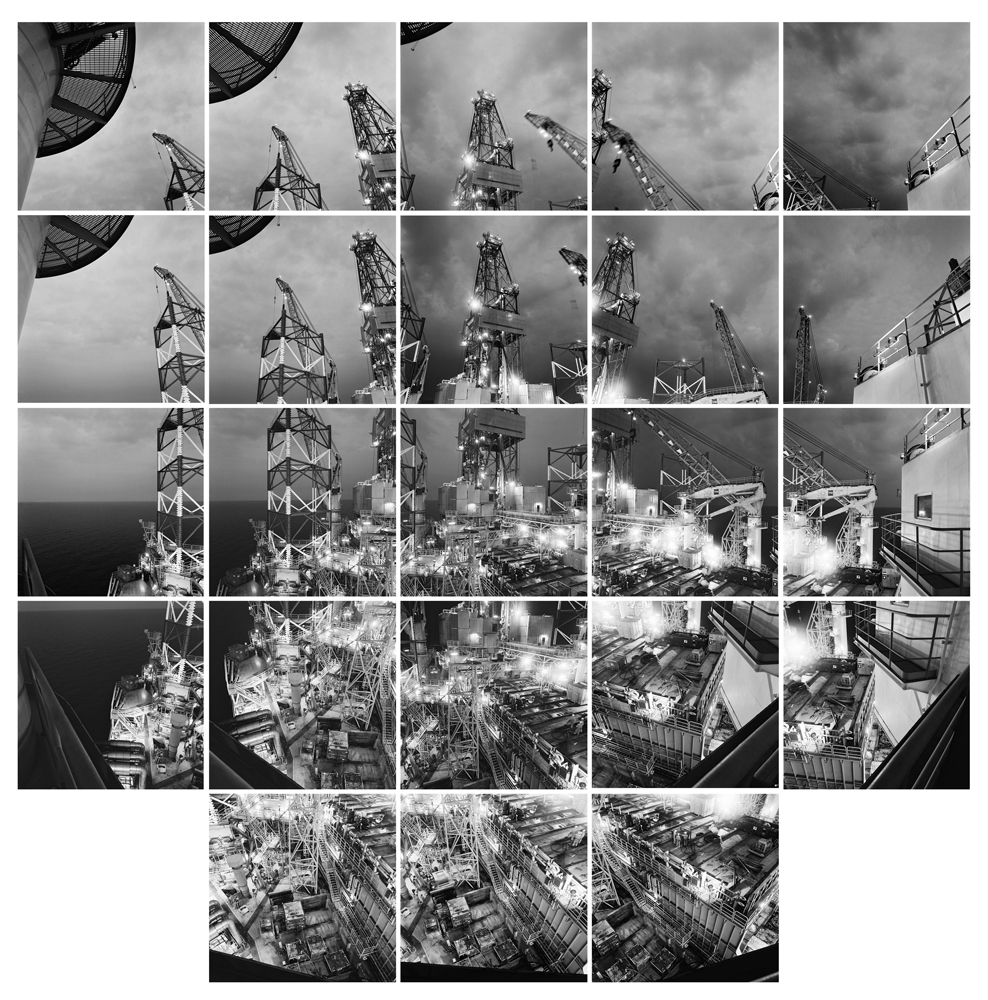30th July 2016
“ It tests you physically, mentally and emotionally. Every single corner of your psyche gets
seriously rinsed out here……….”
(Title image: Starlings On Fire, © Peter Iain Campbell, all rights reserved.)
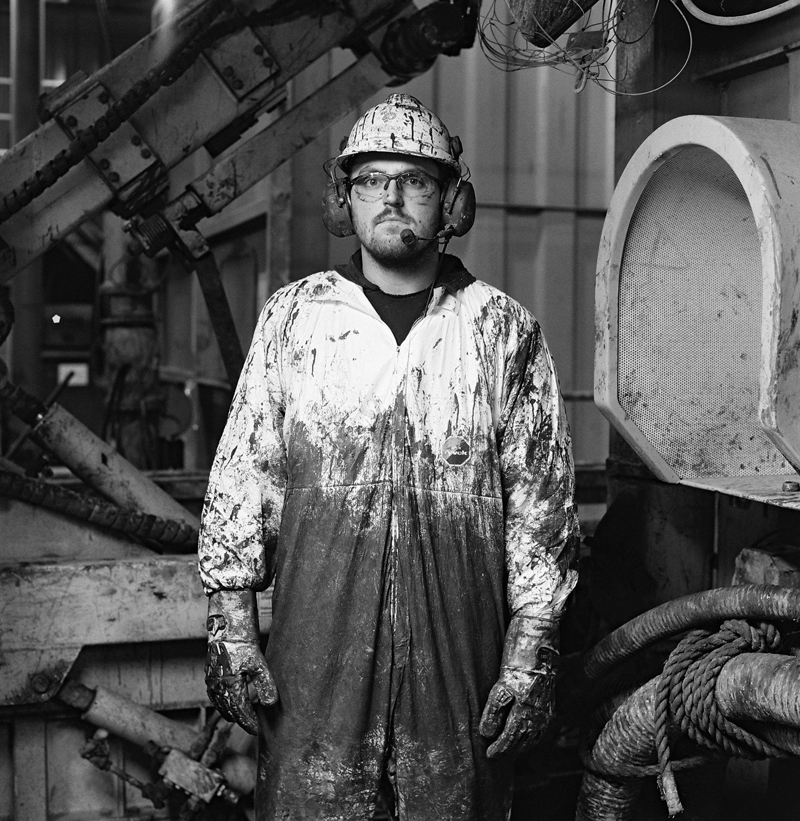
SEARCHING FOR THE ANTITHESIS / A TANGLED WEB OF PIPING
11th November 2013 – 12th August 2014
Being strapped to a seat inside a metal cylinder and then submerged in a large, deep pool of tepid
water, to perform helicopter safety and escape drills, was the easy part. Establishing a way of
getting onto an offshore installation in the North Sea to work, let alone undertake a photography
project, was definitely going to be the hard part.

In late 2013, a sequence of photography projects and wild notions had brought me to an Offshore
Survival Centre in Aberdeen where I undertook the Basic Offshore Safety Induction and
Emergency Training course – the minimum requirement for anyone wanting to work offshore in
the Oil and Gas Industry. Completing the course didn’t guarantee anything, other than a fairly
deep hole in my pockets.
For the following 10 months, while continuing my work as a photographer, I contacted all the
Recruitment Agencies, Drilling Contractors and Facilities Companies based in Aberdeen, trying to
find a route into the offshore world. I had to be very resourceful. Photography is not a
particularly transferable skill into the Oil and Gas Industry.
I got lucky, and in August 2014 I started my first, 2-week trip offshore. It was on the Janice Alpha
Platform, situated in the central North Sea, approximately 175 miles south east of Aberdeen.
I remember my first helicopter flight. I was simultaneously excited and anxious. It was the
antithesis of the life as a photographer I had known up to that point. Exactly what I was looking
for. As we approached the production platform, I looked out of the window and witnessed this
vibrant, bright orange gas flare and what appeared to me to be a chaotic, tangled web of piping
floating in the sea. It seemed surreal, alien and almost post-apocalyptic. My life offshore was
about to begin.

Mid-2013
The genesis of ‘Starlings On Fire’ came in the form of two projects that I was working on
simultaneously during 2013, but which were conceived independently of each other. These
projects formed part of my ongoing interest in post-industrial landscapes. There was an
overarching dystopian nature to both projects.
I had been researching archival images that had the potential to be physically projected back into
some of the decayed ‘monolithic’ environments that I had been shooting in. I kept returning to an
image I have which dates back to the early 1900s. It depicts two diving men sitting opposite each
other, outside a telescopic gasholder, presumably about to commence interior test work on the
holder. I find the image truly captivating. It haunts me. I know nothing about the two men or the
photographer who took the picture.

I started to examine the cache of albums that accompanied this image. They document the
construction of the Granton Gas Works in Edinburgh. I wondered about the lives of the workers
depicted in these photographs, posing with a steely, emotionless gaze towards the camera,
dwarfed by the construction of huge buildings and machinery that surrounded them. I was lost in
the notion of living during that time – documenting the construction of this vast world. I started
to consider the idea of producing a body of work now, which could act as a kind of ‘time capsule’
and be something looked back through in 20 or 30 years time. I needed an industry that
remained relatively unchanged since its beginnings and was somehow cocooned from the social,
political and economic pressures exerted on more land based industries.
I was intrigued by the incongruous existence of the offshore Oil and Gas Installation – a collision
of industry and nature. I quickly established that the only way I was going to be able to produce a
body of photographic work offshore was to try and work out there.
October 2016
I worked for 2 years onboard a Drilling Rig in the North Sea, situated approximately 130 miles
east of Aberdeen. After about 5 months working on a 3:3 Rotation (3 weeks on/ 3 weeks off) and
having bedded myself in to the demands and culture of offshore life, I was granted permission to
start shooting on the rig. Initially, this was restricted to seascapes only. I shot the entire project
on 120 film, which aside from what Roger Ballen calls the ‘great alchemy of analogue’, meant that
I didn’t have to get a Permit to Work every time I wanted to shoot. This was a good thing. It gave
me relative freedom to work around my 12-hour daily shifts and I often worked at night, where
shooting opportunities often only presented themselves at 2 or 3am in the morning.

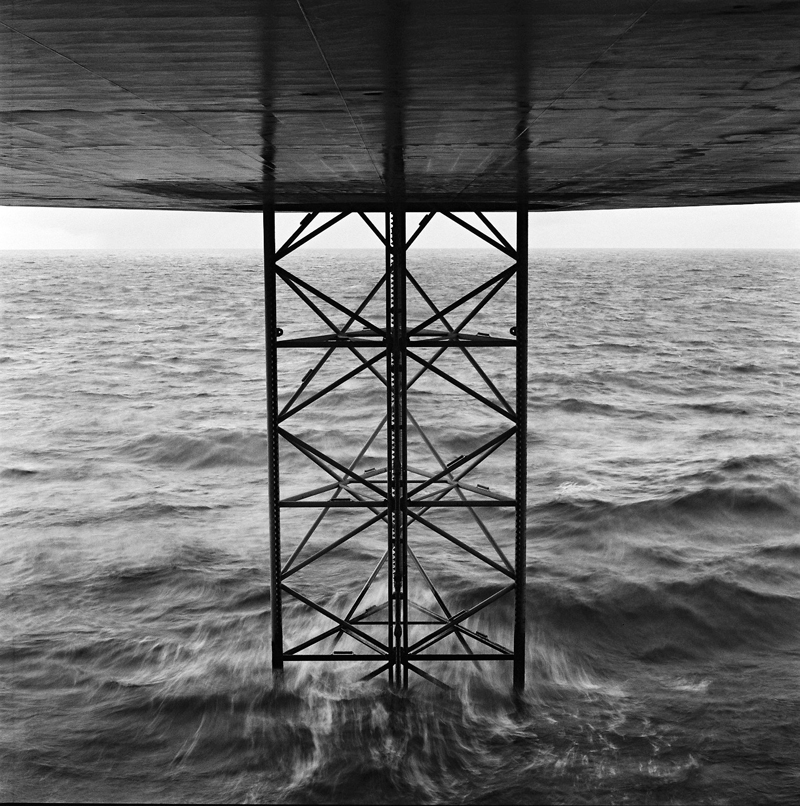
The seascapes were more than just a photographic opportunity however. The entire process
became ritualistic and a means of escape, metaphorically speaking. This was my incentive and
motivation for getting through an arduous shift or trip. The magic hour (at both ends of the day)
became a period of reflective solitude, yet the perpetual humming of the rig always prevented the
experience from developing into something more spiritual.


A positive acknowledgement of my seascape work allowed me to extend the scope of the project.
I was granted unprecedented access to the entire rig and with the approval of the on-shift driller,
I could shoot in and around its fulcrum, the drill floor. I was constantly drawn to this area.
Between the driller’s digital control hub, ‘The Dog House’, and the machinery and workings on
the drill floor, I often thought it was like entering the combined fictional worlds of H.G.Wells and
William Gibson. I was a photographer documenting heavy industry in the late 1800’s, but in a
strange parallel universe where there had been a sudden spike in technological advancement.
I developed a strong relationship with the core and third party crews onboard, but I had an
almost equal interest in the architecture, machinery and layout of the rig. There’s an underlying
feeling of isolation, volatility and danger offshore. The confined physical environment can be
claustrophobic, the natural elements harsh and brutal. By combining the seascapes and the
portraits I wanted to convey these qualities, but maintain a certain level of distance and
anonymity between the crew and the viewer, referencing the archival industrial photographs
that had inspired me three years earlier.
……………………………………………………………………………………………………………………………………………
31st July 2016
“ Do you know where you’ll be redeployed when this contract is up? ”
“ Aye…..the dole queue.”
“Hah, really?!”
“Aye, I’m not fucking kidding. This is the third slump I’ve experienced and it’s definitely the
worst. I think the North Sea’s fucked. I don’t think it’ll ever recover………unless we get a good
old war……….. the good times are gone. The way I see it, if this is gonna be my last trip, then I
reckon this could be my last time offshore. If there are jobs out here, then the money’ll
probably be shite.”
……………………………………………………………………………………………………………………………………………


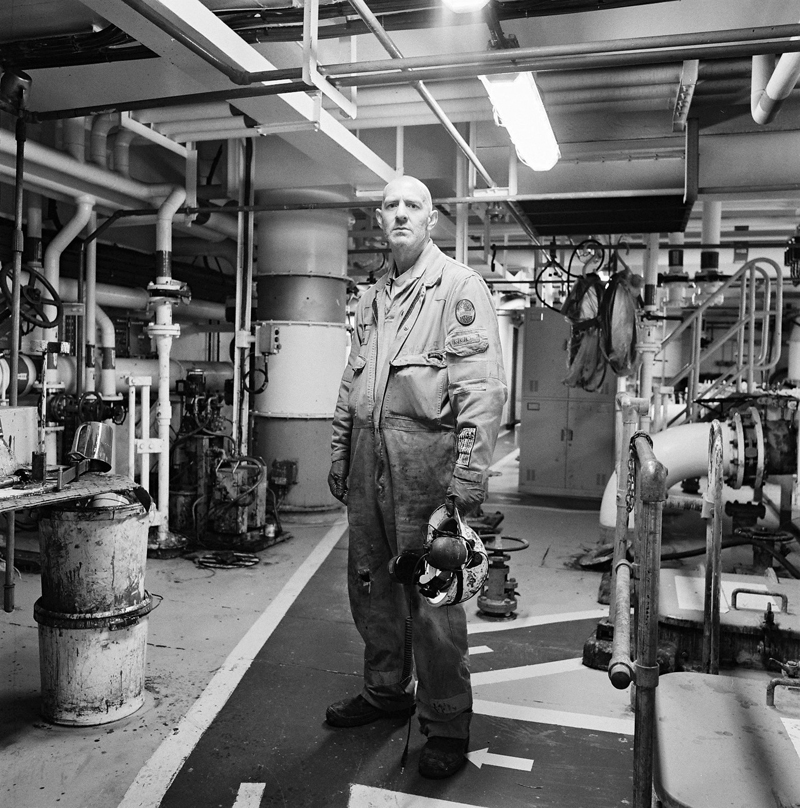

There are many areas within the Oil and Gas Industry that are deeply problematic and
controversial. The offshore installation almost acts as a provocative totem for the industry.
When I started this project in August 2014 the price of oil was approximately $110 per barrel
and there was much speculation that the industry in the North Sea would continue to thrive for
another 30 – 40 years.
By February 2016 the price of oil had slumped to an 11 year low of $28 per barrel. Oil companies,
suppliers and contractors started streamlining their operations, which lead to many people
across the industry losing their jobs. The North Sea was particularly hard hit. Its waters are
amongst the most expensive in the world for carrying out Oil and Gas exploration and
production. This year the Industry approved less than £1billion to spend on new projects,
compared to a typical £8billion per year in the last five years. According to Oil and Gas UK’s
Activity Survey, published in February 2016, if the price of oil were to remain at approx. $30 for
the remainder of 2016 then nearly half (43%) of all UKCS (UK Continental Shelf) oil fields would
likely be operating at a loss, deterring any further exploration and investment.

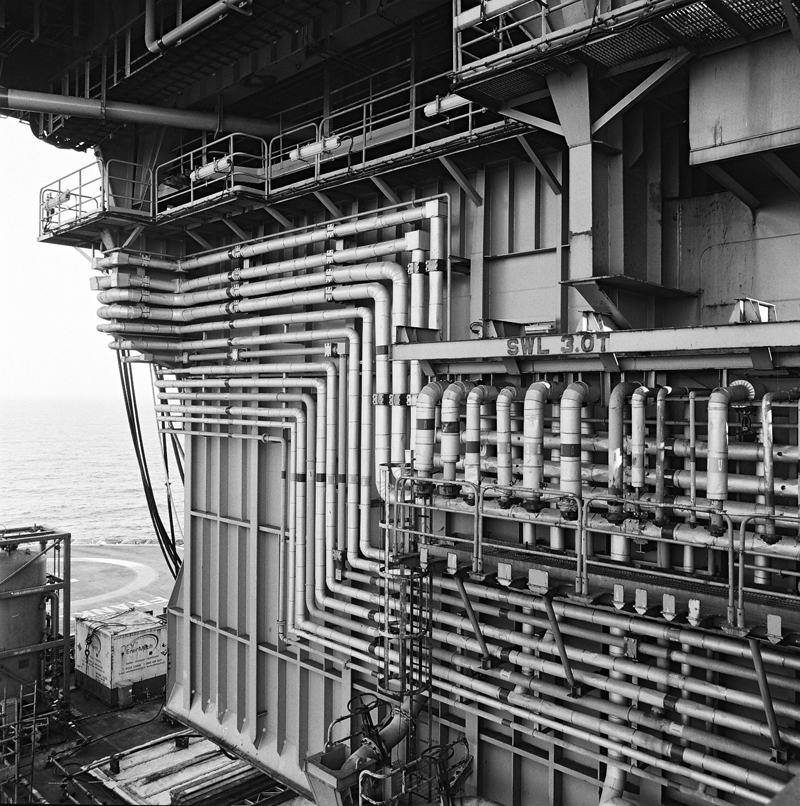
The number of Drilling Rigs operating in the North Sea plunged in September to 27, the lowest
number since records began in 1982. In the same month, the drilling contract for the Drilling Rig
I worked on expired. The vast majority of the crew onboard were served notice of redundancy
and the rig was towed into the shipyard, where it remains today.
Decommissioning in the North Sea is being viewed across sections of the industry as being the
major investment opportunity of the future.
……………………………………………………………………………………………………………………………………………
21st July 2016
“ Pink Floyd! Is that Pink Floyd?! ”
“ No. It’s Mogwai.”
……………………………………………………………………………………………………………………………………………

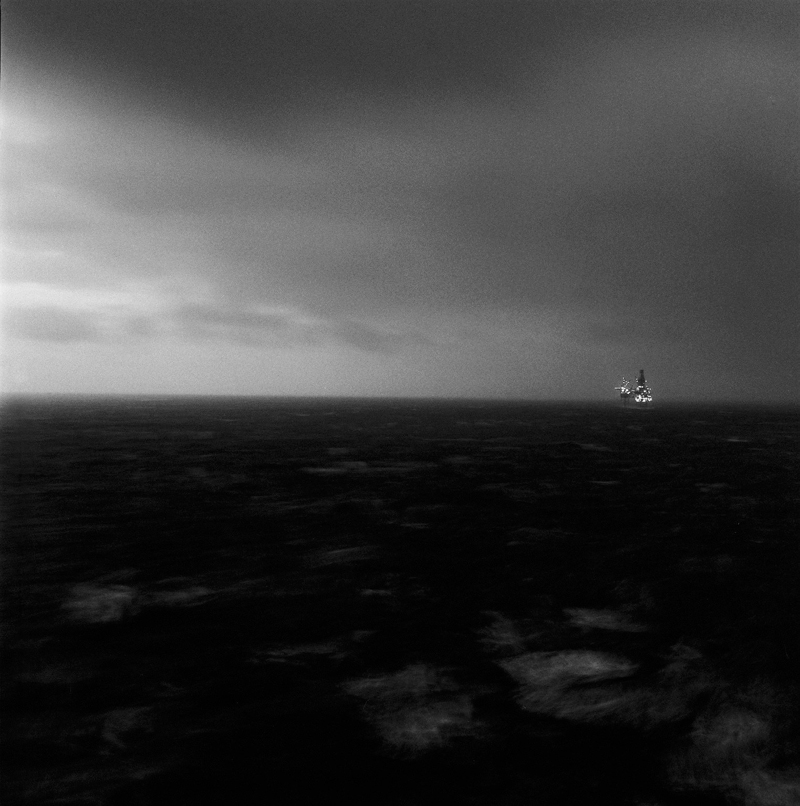
Many thanks to Peter Iain Campbell for allowing us to share his project.
Peter Iain Campbell photography website, and Peter Iain Campbell on Instagram.

